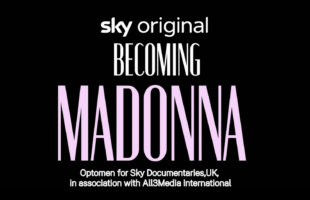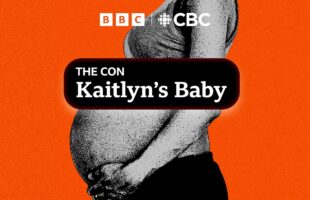To say that drama is a must-have TV genre is an understatement. Scripted shows are driving prime-time TV around the world like never before. Hit dramas such as HBO’s Game of Thrones, Netflix’s House of Cards and ABC’s The Walking Dead bring a buzz unmatched by any other type of show. Even for channels that aren’t typically identified by their drama, high-quality shows can help enhance their reputations.
Drama is important for viewers and for the reputation of a broadcaster globally. The audience in Singapore, Indonesia and Malaysia are watching Korean dramas such as My Love from The Star, Flower in the Prison, Boys Over Flower, The Queen of Office and countless more K-dramas. Korean soaps are now making inroads in Latin America, a region that has its own prolific drama-production business. Middle East, Indonesia, Malaysia and China are watching Turkish period dramas – 20 Minutes, Forget Me Not and more. Most dramas are an international attraction with no barriers to race, language or religion. In fact, these are the elements that fascinate viewers in other regions. Other audiences in Germany are turning into RTL II for a look at Bollywood glamour. Across the Middle East and Africa, Filipino fantasy series and Malaysian soap are popping up on television schedules. There’s even a Singaporean-Malaysian drama being considered for a U.S. adaptation.
Hit by Hallyu
The export success of South Korea’s television dramas has spawned a hard-selling world of branded entertainment that uses product placement to push everything from smartphones to lipsticks.The so-called Hallyu (Korean Wave) of television shows and pop music has long conquered most of Asia and, in recent years, found fans in the Middle East, Latin America and North Africa. The vast audiences opened stealth marketing opportunities that have become distinctly less stealthy as competition has intensified. South Korean firms now spend millions of dollars ensuring lovers in popular soap operas confess their feelings via Samsung smartphones, kiss in Hyundai cars and move into a house equipped with a giant LG TV. The power of the most popular dramas to launch new trends and boost existing ones was displayed by the recent production My Love from the Star – an unlikely love story between a top female movie star and a 400-year old alien disguised as a human.
The SBS television show was a huge hit, especially in China where it triggered a craze for Korean-style fried chicken and beer, the favoured comfort food of the show’s heroine – played by Gianna Jun. The main characters talked and sent texts on Samsung’s Galaxy Note smartphones, or chatted via the Line mobile app made by Naver, Seoul’s top portal. Jun’s character used lotions and lipsticks made by Amorepacific, the South’s largest cosmetics fi rm. Supporting characters had an insatiable taste for mini-desserts made by CJ – the country’s top food company. The exposure clearly pays off. Amorepacific stated that sales of the skincare products and lipsticks used by Jun surged 75 per cent and 400 per cent respectively, largely thanks to booming sales in China. “In the past, PPL [product placement] on South Korean TV shows boosted domestic sales only,” the company said. “But we’ve recently seen it having an immediate and widespread impact in Asia, especially in China.” Amorepacific’s overseas sales grew 28 per cent in 2013, boosted by a 29 per cent expansion in China.
More than 90 percent of product placement deals on South Korean soap operas involve domestic firms, but foreign companies are also being attracted by the lure of improved sales in a key regional market. In My Love From the Star, a pair of US$625 Jimmy Choo shoes worn by Jun sold out across Asia within days. Even more dramatically, it only took a rumour – the brand name never appeared – that the lipstick Jun used in one episode was from Yves St Laurent to cause a similar run on that product. Neither Jimmy Choo nor YSL had even struck a deal to have their products in the show. Mercedes-Benz did, and the German carmaker saw sales of its models featured in the show spike. “Many companies now know if their products are featured in our shows, Asian viewers, especially women, will feel more familiar with their brands – whether on a conscious or unconscious level,” said Kim Yeongseop, an executive producer at SBS.
While details of product placement deals are not disclosed, industry sources say exposure on popular shows costs at least 100 million won (HK$75.8 million) and much more for a hit drama featuring A-list stars with a regional following. The biggest spender of all is Samsung – the world’s largest technology firm by revenue – which sponsors around two-thirds of all home-grown soap operas, said Kim Si-Hyun, head of 153 Production, a major product placement agency in Seoul. “It’s a full package, meaning all visible consumer electronics like smartphones, computers, cameras, air conditioners, TVs and refrigerators are Samsung products, from beginning to end,” Kim said. After entering the new millennium, Korean dramas had begun airing in the Philippines since 2003, starting with GMA Network as the very first network to air Koreanovelas kicking off with Bright Girl; followed by rival network ABS-CBN as the competitor for airing Korean dramas; as well as TV5 and other Free TV networks which they also worked to broadcast Korean dramas through Philippine television.
South Korean dramas are one of the greatest interest of airing foreign programs in the Philippines on its 21st century, which had already aired more than 100 Koreanovelas as of the end of 2014. Most media broadcasters in the Philippines airing Korean dramas are ABS-CBN (with its former sister channel, Studio 23), GMA Network (with its former sister channel QTV), TV5, as well as minor TV networks Net 25, government channel PTV and among others especially IBC. Furthermore, airing Koreanovelas in the Philippines are on-going the process of localisation, which consists the process of program re-dubbing, pre-editing, post-editing and finalisation of the re-production process which had been going on-air at the specific date. Asian dramas have become hits since the 2000s, excluding Japanese dramas. The huge demand from viewers for Asianovelas has prompted Philippine TV stations to import only Korean and Taiwanese dramas.
Top Korean drama series Lovers in Paris, Full House, My Name is Kim Sam Soon, Stairway to Heaven and Coffee Prince were imported and dubbed in the Filipino language, instantly becoming hits. The success of Jewel in the Palace in Korea was also replicated in the Philippines and many other Asian countries. The Taiwanese drama Meteor Garden was also a rating success when it first aired in 2003. Its remake, the Korean Boys Over Flowers, starring Lee Min Ho, Kim Hyun Joong, Kim Bum, Kim Joon, Kim So Eun and Koo Hye Sun, also succeeded in capturing audiences. It was aired in the Philippines on ABS-CBN from May to August 2009 and became a phenomenal success.
In TV5, the third largest network in the country, they aired Asianovelas such as Hero, My Wife is a Superwoman, and the Taiwanese drama Easy Fortune Happy Life, together with the Israeli drama Split, and the variety show Willing Willie hosted by Willie Revillame. However, a TV5 representative said that instead of putting all their own Korean dramas in prime time, they’ve decided to move it to noontime: “It’s actually the strategy of TV5 to do counter-programming. When everyone else is going high energy with noontime shows, here we are offering the best titles of Koreanovelas at noontime. It’s like it will be our prime time. We want to provide an alternative.”
Across Asia, viewers are falling in love with popular Korean military romance drama
Millions across Asia sat down for the finale of the hit Korean drama series that triggered relationship health warnings in China, a thumbs up review from Thailand’s junta chief and a trans-regional passion for its two young stars. Descendants of the Sun tells the story of an army captain sent on a peacekeeping mission to a fictional war-torn country, Uruk, where he meets and falls in love with a surgeon working with a medical NGO. The 16-episode show has garnered impressive domestic ratings for broadcaster KBS, but its real success has been overseas and the series has been hailed for reviving the so-called “Hallyu” (Korean wave) of K-pop and K-drama that started spreading across Asia in the early 2000s. It has proved particularly popular in China, where it has been simulcast on the video-streaming site iQiyi. com and has notched up more than 2 billion accumulated views, while becoming one of the top-ranked search and discussion topics on Weibo, China’s version of Twitter. In Hong Kong, where it’s shown on Viu TV — a free-to-air channel that also has an online portal — the series is popular with commuters who like to view it on their smartphones while travelling to and from work.
Korean dramas normally begin airing before later episodes are filmed — allowing for ratings-boosting script adjustments. But “Descendants of the Sun” was pre-recorded in its entirety — a major risk, according to its South Korean producer Next Entertainment World (NEW). “None of the pre-recorded dramas has been successful in the past,” a spokeswoman for NEW said. “But it was necessary to pass Beijing’s censorship rules for our first simulcast in China.” Censors did make some changes to the Chinese version of the drama, including deleting a fight between South and North Korean soldiers in the first episode. Pre-recording paid off by allowing a strong pre-broadcast marketing strategy that included airing movie-like teasers in South Korea and China three months in advance. The drama has now been sold to 32 countries, including Japan and non-Asian broadcasters in the United States, England, France and Russia.
Its success is built on the same staples that have made K-dramas a lucrative cultural export: attractive lead actors, melodrama and romance. What sets it apart, experts say, is its modern-day setting of military peacekeeping, upbeat patriotism and, perhaps most crucially, the fact that it’s a K-drama that isn’t “too Korean.” “At a time when Asia has seen scores of natural disasters like tsunami and earthquakes, the series projects a sense of universal humanity,” said Yun Suk-jin, professor of Korean Literature at Chungnam National University. “And because it is set overseas rather than in Korea, it appeals more to international viewers,” Yun said. It has spawned a mini-industry, with Chinese fans snapping up cosmetics, clothes and fashion accessories favoured by the show’s stars — especially the female lead Song Hyekyo — and sold on iQiyi.com‘s online shopping site.
Viewers can’t get enough of foreign-language dramas
In the U.K., fifteen years ago if you’d mentioned to a colleague that you’d spent Saturday night glued to a subtitled European drama, you’d have been quietly declared pretentious, dull and, possibly, a little odd. Today, foreign-language dramas aren’t even on-trend, they’re fully mainstream. Now many are likely to discuss the latest Danish thriller over a morning coffee at the desks. In the U.K., until recently, foreign television tastes have focused predominantly on Scandinavia and France. One of Netflix’s biggest shows in 2015 was Narcos, the story of Colombian drug lord Pablo Escobar, told in a combination of English and Spanish. Less than a week after its premiere, the show was renewed for a second season; it’s now on the shortlist for best TV show at the Golden Globes.
Perhaps inevitably, all this success has led to someone upping the ante. That someone is Walter Iuzzolino, Chief Creative Officer at Global Sales Network and the curator of Walter Presents, the new streaming service dedicated to foreign language TV, a partnership between Channel 4 and Global Sales Network. Walter Presents is a unique proposition. It’s flagship show Deutschland 83 premiered on Channel 4 while other shows will appear on More4. The rest will be distributed throughout 2016 via the All4 platform, where series will be consumed. Shows will be as diverse as Kabul Kitchen, a French comedy set against the backdrop of the war in Afghanistan, and the Dutch show The Neighbours, described as Fatal Attraction meets Sex and the City. To Iuzzolino, the buzz around foreign TV was so strong that, over the course of two years before the project’s launch, he watched more than 3,500 hours of small-screen action; as the channel’s curator, he was in a state of anxiety, convinced that someone would realise his idea before he could launch it. While that may not have happened, imported programming is certainly on the mind of acquisition teams. Two of Netflix’s big shows for 2016 are the hugely anticipated Marseille, an eight-part on France’s second city starring Gerard Depardieu, and Japanese original Hibana, based on the novel by Naoki Matayoshi. Sky Arts regularly screen foreign language programmes – the Danish family drama The Legacy, for example – and Sky Atlantic has got in on the act with propositions such as Italy’s Gomorrah. Sky even has a new European Production Hub, tying together its arts coverage across the continent. There’s no doubt that Walter Presents will set curtains twitching right around the (TV) world. It’s not that foreign-language TV wasn’t previously shown: in the Eighties, there was the Hindi series Mahabharat, an epic tale of feuding princes, as well as Heimat, which told the story of ordinary lives in 20thcentury Germany was picked up by the BBC. Channel 4 dipped a toe in with Swedish Xerxes in 1988 and Brazilian favela drama City Of Men in 2004. But until the mid-Noughties, foreign language programming was on the periphery; as though, says Iuzzolino, the channels were “restaurants who had put a special on the board”.
Drama rating
Game of Thrones‘ ratings exploded in the U.S. during the show’s season six finale. The Sunday’s show was watched by 8.9 million people, a new high for the HBO drama. By comparison, the season fi ve fi nale was watched by 8.1 million. Adding streaming, DVR recordings and repeat showings, the show averaged over 23 million viewers per episode, up 15% from last year, according to Entertainment Weekly. In part, that’s thanks to the HBO Now platform, which allows people who don’t pay for HBO on cable to purchase a streaming subscription. Viewing of this season of Game of Thrones on HBO Now and HBOGo numbers shot up over 70% from last year. The numbers are record-setting for the show (and HBO), but they also solidify Game of Thrones‘ stance as the last appointment-viewing show on television. Anyone who doesn’t watch the night it airs — even the hour it airs — will likely be spoiled on social media before they get a chance to catch up. This is also true of some other dramas, including AMC’s Walking Dead and ABC’s Scandal. But the viewership for both those shows dropped this last season. (Walking Dead‘s latest season finale had a total viewership of 14.2 million, down from 15.8 the year before; Scandal had its lowest season fi nale to date with 5.97 million viewers). Meanwhile, heading into what are likely its last two seasons, Game of Thrones is growing. Consensus television didn’t use to be strange. In 1983, 125 million people tuned into the series finale of M*A*S*H. In 1993, 93.5 million people bid farewell to the Cheers gang. And in 2004, 65.9 million people watched the cast of Friends take their last bow. Indeed, Friends averaged about 25 million viewers per episode its last season, a feat not even Thrones could dream of today. Thanks to the rise of cable channels like AMC and FX and streaming services like Netflix and Amazon, television audiences have been getting smaller and smaller and viewers are more and more divided between shows. The result has been plenty of commendable series created for niche audiences, but few shows that can capture the public imagination as a whole in the way that Game of Thrones does.








